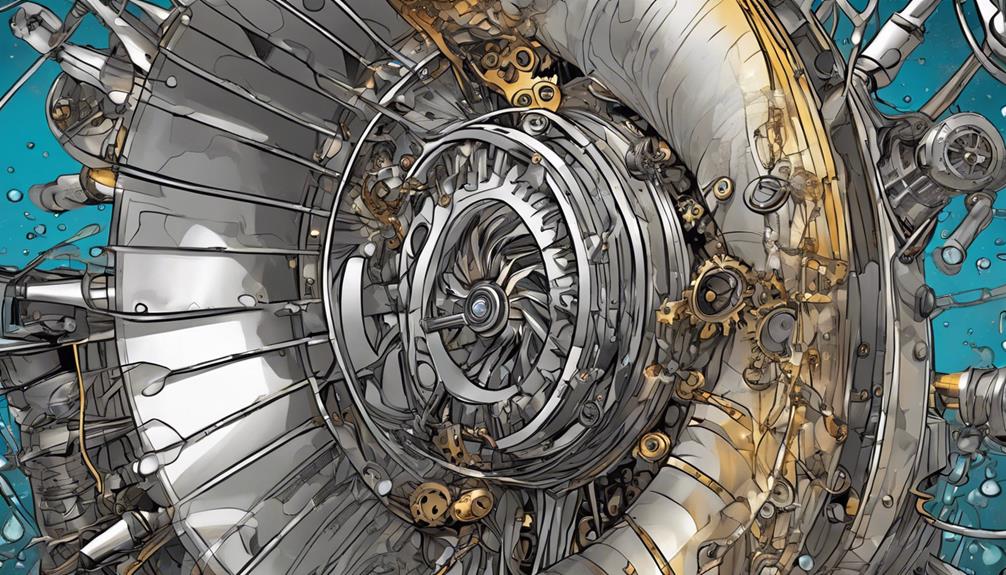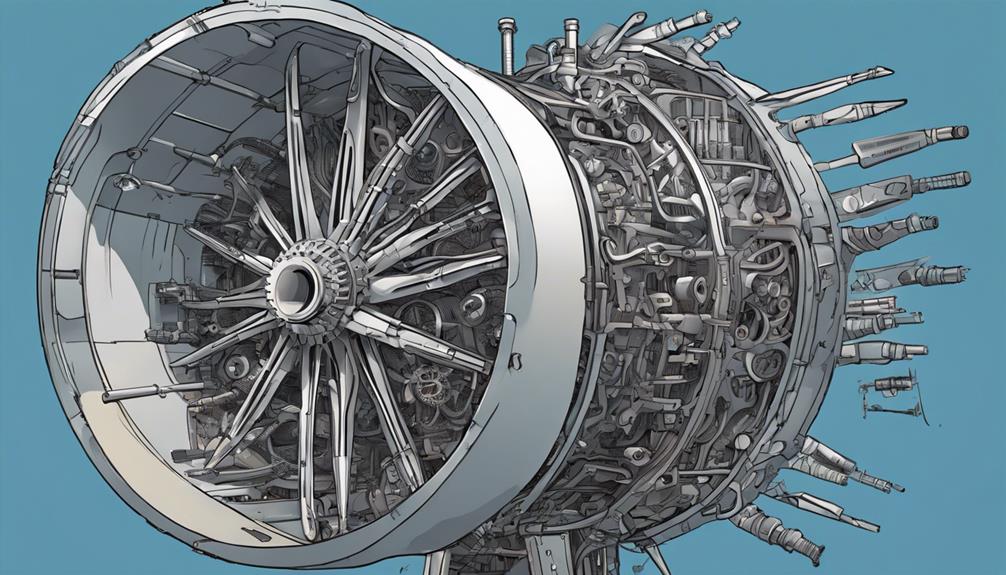When it comes to optimizing wind turbine performance, I've learned that proper lubrication is the vital component. Oil reduces friction, serves as a coolant, and removes contaminants that can cause turbines to overheat, seize up, and halt. Regular oil analysis and maintenance are essential to prevent downtime and guarantee peak performance. By prioritizing oil management, we can safeguard the ecosystem and ensure sustainability. As I explore the world of wind turbine lubrication, I'm discovering the importance of sustainable practices, alternative lubricants, and environmental impact – and I'm excited to see how these factors can come together to maximize efficiency and minimize pollution.
Key Takeaways
- Regular oil analysis and maintenance ensure peak wind turbine performance by reducing friction, heat, and contaminants.
- Proper lubrication of gearboxes and pitch systems maximizes efficiency, reduces wear, and prevents overheating.
- Monitoring oil viscosity, temperature, and contamination levels helps detect potential issues before downtime or failure.
- Sustainable oil maintenance practices, such as using alternative lubricants from renewable resources, minimize environmental pollution and reduce costs.
- Implementing proactive oil management strategies optimizes performance, reduces energy losses, and promotes long-term sustainability.
The Crucial Role of Oil

As I delve into the world of wind turbine performance, it becomes evident that oil plays a vital role in reducing friction, serving as a coolant, and removing contaminants, making it a key element for top-notch operations.
Without oil, wind turbines would quickly overheat, seize up, and grind to a halt. Regular oil analysis and maintenance are necessary to guarantee peak performance and prolong the lifespan of turbine components.
Furthermore, considering the environmental impact of oil use is essential, and exploring alternative lubricants from renewable resources can minimize pollution. By prioritizing oil management and recycling, we can safeguard the ecosystem, contribute to cost efficiency, and ensure long-term sustainability.
Gearbox Maintenance Essentials
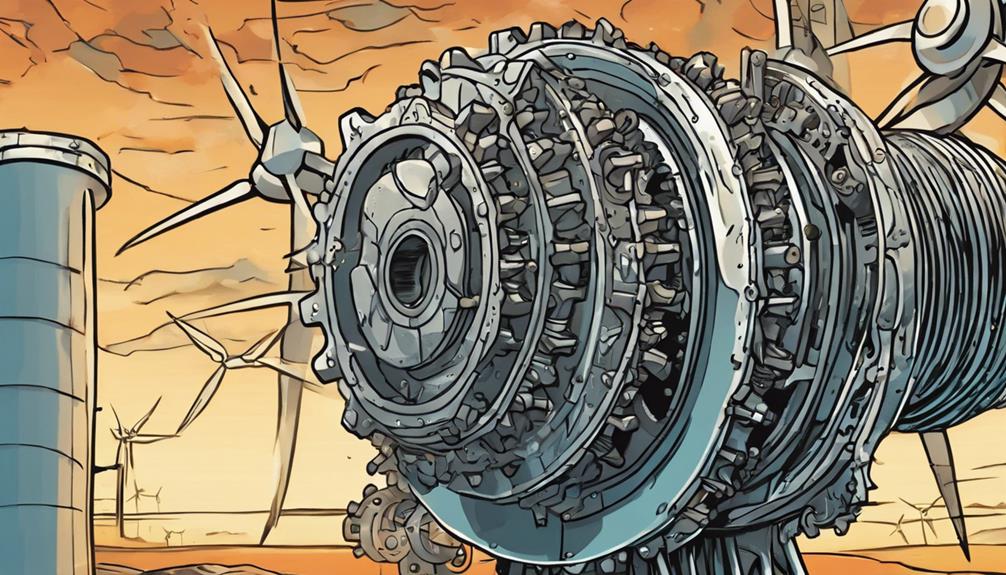
Every hour of gearbox downtime can cost thousands of dollars in lost energy production, making regular oil analysis and maintenance essential for wind turbine operators like me to maximize performance and reliability.
As I know, oil plays a critical role in reducing friction, dissipating heat, and removing contaminants in the gearbox. Regular oil analysis helps me monitor the condition of the lubricant, ensuring it's performing efficiently.
I make it a point to check the oil's viscosity, temperature, and contamination levels to prevent premature wear and tear on the gearbox components. By doing so, I can extend the lifespan of the gearbox, reduce maintenance costs, and promote peak performance of the wind turbine.
Pitch System Lubrication Needs
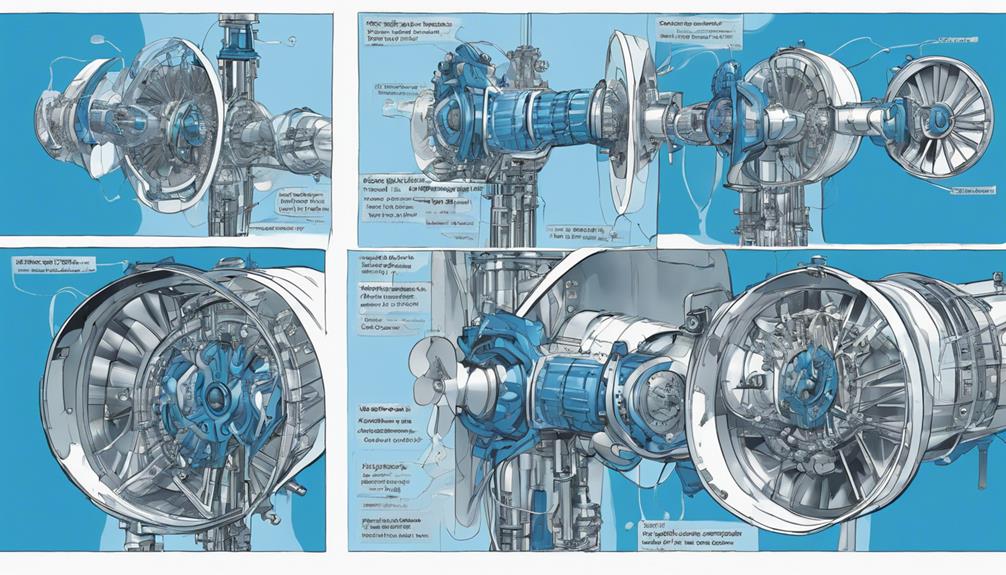
I also need to make sure the pitch system is properly lubricated to maximize its performance and reliability. Regular lubrication is important to reduce friction, wear, and maximize efficiency.
To maintain the oil's quality and condition and avoid breakdowns, and extend the system's lifespan, it's crucial to monitor it. I must consider the environmental impact of the lubricants used, exploring alternative options made from renewable resources and biodegradable materials.
Proper oil maintenance procedures, including regular sampling and analysis, are necessary to ensure the best lubricant condition. By doing so, I can minimize environmental pollution, reduce costs, and contribute to sustainable wind energy practices.
Oil Analysis and Monitoring
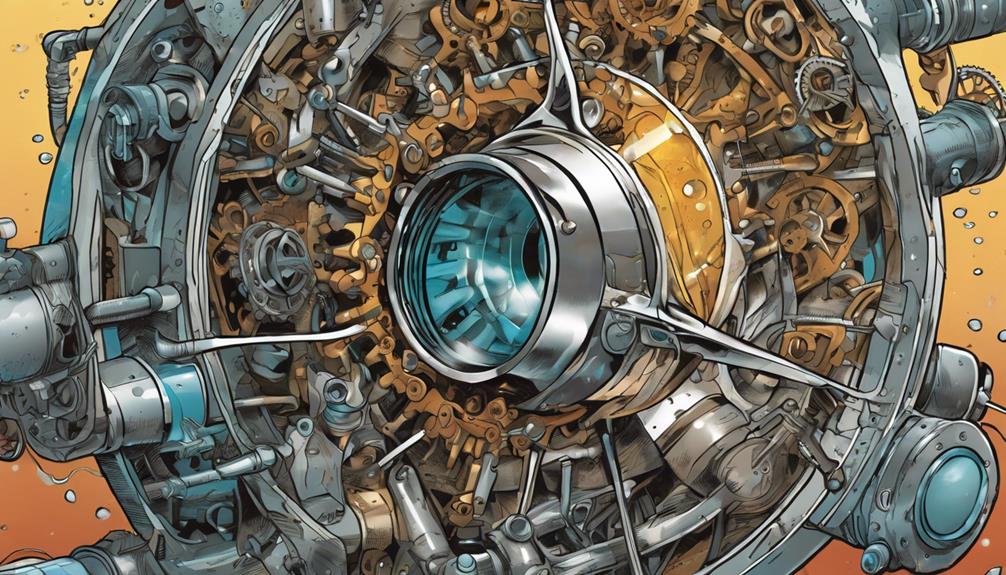
Regular oil analysis and monitoring are critical components of wind turbine maintenance. They enable me to detect potential issues before they cause downtime or component failure. By analyzing oil samples, I can identify contaminants, wear metals, and other signs of degradation that might affect turbine performance.
This proactive approach allows me to schedule maintenance during planned downtime, reducing unexpected repairs and minimizing revenue loss. Additionally, oil analysis helps me optimize oil change intervals, reducing waste and environmental impact.
With regular monitoring, I can ensure the pitch system and gearbox operate at peak efficiency, reducing energy losses and promoting sustainable wind energy production. By staying on top of oil conditions, I can maximize turbine uptime and reliability.
Sustainable Oil Maintenance Practices
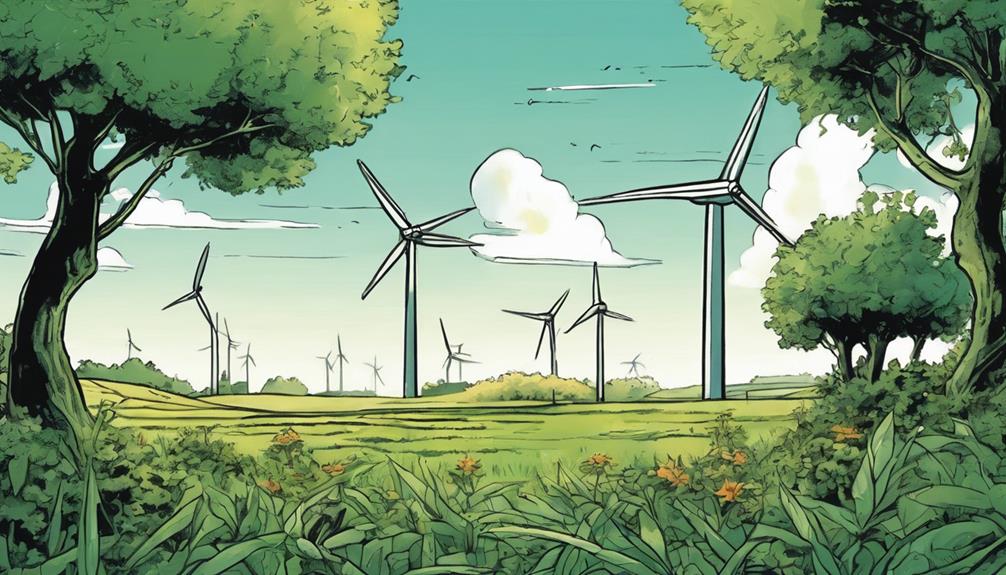
By adopting sustainable oil maintenance practices, wind turbine operators can greatly reduce their environmental footprint while promoting cost efficiency and reliability. As I explore the world of wind turbine maintenance, I've come to realize that proper oil management is essential.
Regular oil sampling and analysis guarantee ideal lubricant condition, extending its lifespan and reducing waste. I've also learned that proper oil disposal is crucial, preventing pollution and protecting the environment.
Additionally, investigating alternative lubricants from renewable resources can minimize environmental impact. By implementing these sustainable practices, wind turbine operators can contribute to a cleaner environment, reduce costs, and ensure long-term viability. It's a win-win for both the planet and the industry.
Environmental Impact of Oil Use

As I explore the world of wind turbine maintenance, I've come to realize that environmental responsibility is an important aspect of the process. Proper oil disposal and the investigation of alternative lubricants are essential steps in reducing the environmental impact of oil use in wind turbines.
Here are some key takeaways:
- Adhering to environmental regulations minimizes pollution and protects ecosystems.
- Investigating alternative lubricants reduces environmental impact and promotes sustainability.
- Alternative lubricants are environmentally friendly, made from renewable resources and biodegradable materials.
- Proper oil disposal contributes to a cleaner environment and guarantees lubricant longevity.
Alternative Lubricant Options
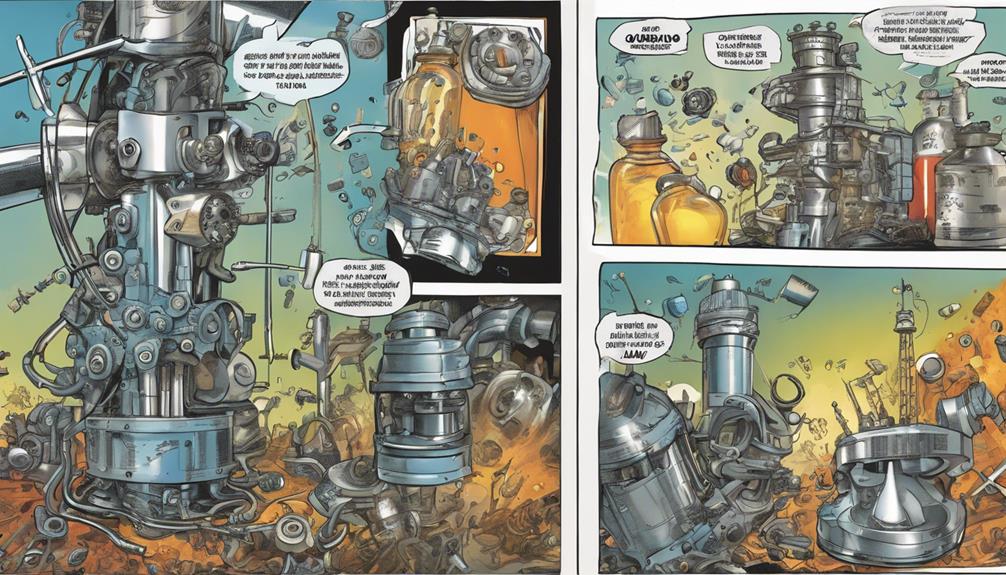
Frequently, I've found myself exploring alternative lubricant options that not only minimize environmental impact but also offer comparable or superior performance to conventional oils. As the wind industry shifts towards sustainable practices, it's crucial to consider eco-friendly lubricants made from renewable resources and biodegradable materials. These alternatives can reduce pollution, protect ecosystems, and promote sustainability.
I've discovered that some alternative lubricants outperform traditional oils regarding thermal stability, corrosion protection, and wear reduction. Additionally, they can extend oil lifespan, reducing maintenance costs and environmental waste. By adopting alternative lubricants, wind turbines can operate efficiently while minimizing their ecological footprint, ultimately contributing to a cleaner and more sustainable future.
Frequently Asked Questions
Can Wind Turbines Operate Without Lubrication?
Honestly, I think it's very unlikely for wind turbines to operate without lubrication; oil reduces friction, acts as a coolant, and removes contaminants, making it essential for smooth and efficient turbine operation.
How Often Should Oil Analysis Be Performed for Optimal Results?
'I recommend performing oil analysis every 3-6 months to achieve best results, as this frequency allows for timely detection of potential issues and maintenance planning to prevent downtime and extend component lifespan.'
Are There Any Government Incentives for Sustainable Lubricant Practices?
"Did you know that 80% of wind turbines operate with inefficient lubrication? As for government incentives, yes, many countries offer tax credits, grants, and subsidies for adopting sustainable lubricant practices, encouraging a greener future."
Can Used Lubricants Be Repurposed for Other Industrial Applications?
"As I explore sustainable practices, I've found that used lubricants can indeed be repurposed for other industrial applications, reducing waste and minimizing environmental impact – it's a win-win for the planet and my business!"
What Is the Average Lifespan of Wind Turbine Lubricants?
"I've found that the average lifespan of wind turbine lubricants varies, ranging from 3 to 5 years, depending on factors like operating conditions, maintenance, and quality of the lubricant itself."
How Does Proper Lubrication Help Prevent Wind Turbine Damage During Shutdown?
Proper lubrication is a crucial wind turbine shutdown speed prevention strategy. It reduces friction and wear, extending the lifespan of components. During shutdown, the lubricant provides a protective barrier, preventing corrosion and damage. Regular maintenance and use of high-quality lubricants are essential for optimal wind turbine performance.
Conclusion
As I reflect on the intricate dance of wind turbine lubrication, I'm reminded that oil is the unsung conductor, orchestrating a symphony of efficiency and sustainability.
By tuning into the needs of gearbox and pitch systems, and harmonizing oil analysis, maintenance, and recycling, we can strike a chord that resonates with a cleaner environment.
By doing so, we can guarantee that these towering giants continue to generate power, not pollution.
